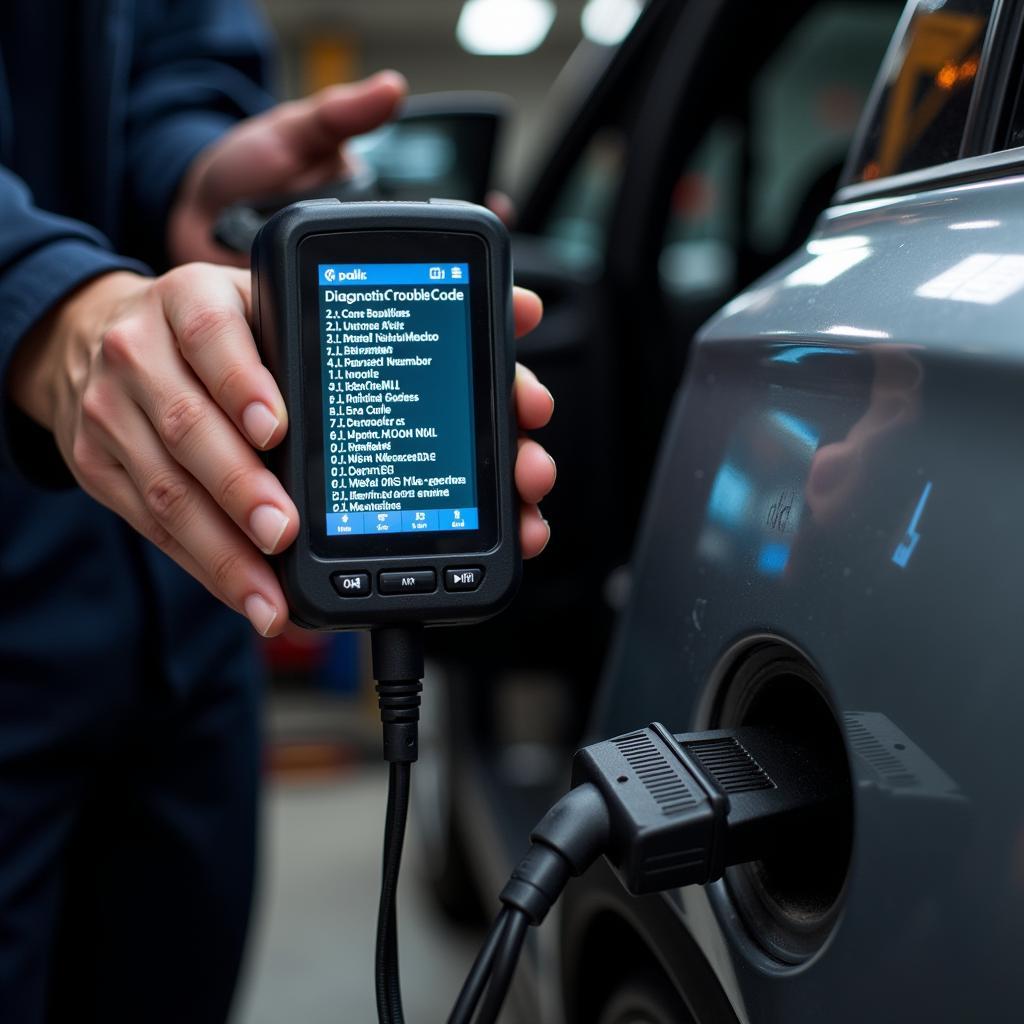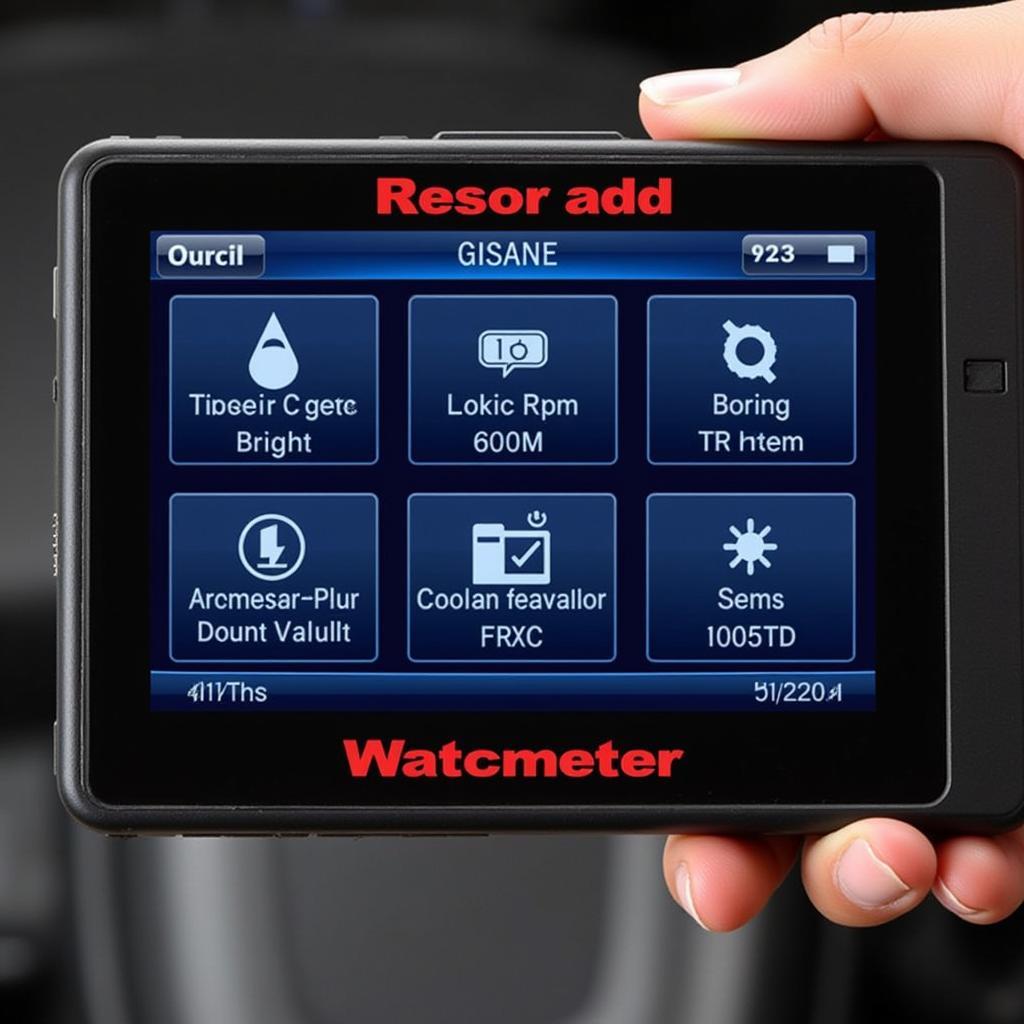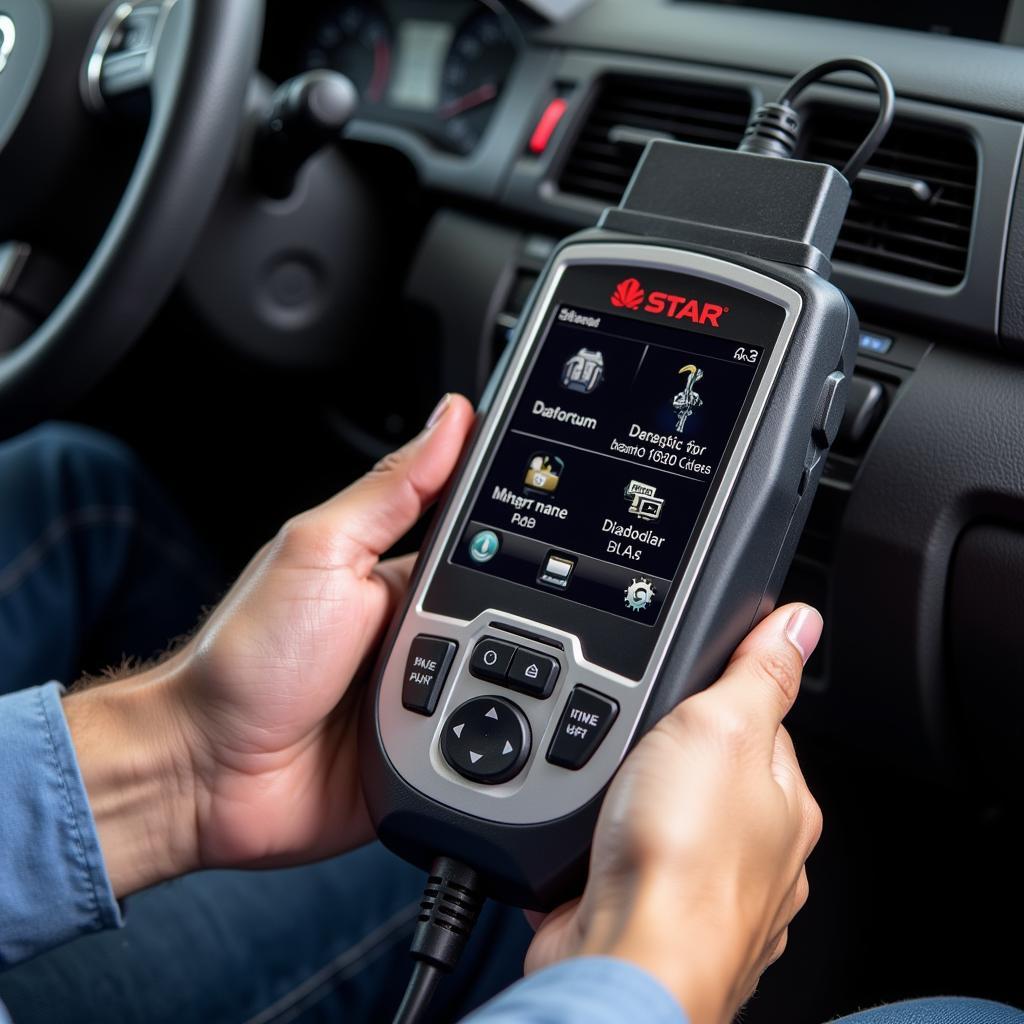The Black Box Diagnostic Tool. It sounds like something out of a spy movie, shrouded in mystery and whispering tales of technological prowess. But for car owners, mechanics, and automotive enthusiasts, it’s far more than a cryptic gadget; it’s a lifeline. It’s the key to understanding what ails your vehicle, translating cryptic error codes into actionable insights.
In today’s world of increasingly complex automotive technology, gone are the days of simple fixes and intuitive repairs. Modern vehicles are intricate networks of sensors, actuators, and electronic control units (ECUs), all communicating in a language that can seem utterly foreign without the right interpreter. That’s where the black box diagnostic tool, more commonly known as an OBD2 scanner, steps in. This powerful device acts as the bridge between you and your car’s internal dialogue, unlocking a treasure trove of information that can pinpoint issues, streamline repairs, and save you time, money, and frustration.
What Exactly is a Black Box Diagnostic Tool?
Imagine being able to have a direct conversation with your car, asking it what’s wrong and getting clear, concise answers. That’s essentially what a black box diagnostic tool allows you to do. It connects to your car’s onboard computer system through a standardized port typically located under the dashboard, often referred to as the OBD2 port. Once connected, it acts as a two-way communication channel, enabling you to access and interpret the wealth of data generated by your car’s various systems.
But this isn’t just about reading cryptic error codes. A good black box diagnostic tool goes beyond simply identifying that something is wrong; it provides context. It can show you live data streams from various sensors, allowing you to monitor engine performance, emissions, fuel economy, and a myriad of other parameters in real time. This granular level of detail empowers you to make informed decisions about repairs, maintenance, and even your driving habits.
Choosing the Right Black Box Diagnostic Tool: A Guide
Navigating the world of black box diagnostic tools can feel overwhelming, with a dizzying array of options available, each touting unique features and capabilities. Here’s a breakdown to guide your decision:
1. Basic Code Readers:
These entry-level devices are ideal for DIY enthusiasts who want to read and clear basic error codes. They’re affordable and easy to use, providing a quick glimpse into your car’s overall health.
2. Advanced OBD2 Scanners:
Stepping up the ladder, these scanners offer more comprehensive functionality. They can read and clear a wider range of codes, access live data streams, and even perform some basic diagnostic tests. They’re a worthwhile investment for car owners who like to delve deeper into their vehicle’s inner workings.
3. Professional-Grade Diagnostic Tools:
As the name suggests, these are the heavy hitters used by professional mechanics and technicians. They offer the most advanced features, including bi-directional control, allowing you to interact with your car’s systems directly. These tools are a significant investment, best suited for those with a high level of automotive expertise.
The Power of Knowledge: How Black Box Diagnostic Tools Empower You
In the hands of a knowledgeable user, a black box diagnostic tool transforms from a simple gadget into an indispensable tool for:
1. Accurate Diagnosis:
Gone are the days of relying on guesswork or expensive trial-and-error repairs. Black box diagnostic tools provide precise error codes and detailed information, allowing you to identify the root cause of a problem quickly and efficiently.
2. Preventative Maintenance:
By monitoring live data streams, you can identify potential issues before they escalate into major problems. This proactive approach to car care can save you significant time and money in the long run.
3. Enhanced Performance:
For performance enthusiasts, black box diagnostic tools are invaluable for fine-tuning and optimizing engine parameters. They provide real-time feedback on adjustments, allowing you to achieve peak performance.
4. Increased Resale Value:
A well-maintained car with a documented service history, often facilitated by regular use of a black box diagnostic tool, commands a higher resale value. It demonstrates to potential buyers that the vehicle has been well cared for.
Beyond the Codes: Real-World Applications
Consider this: your “Check Engine” light illuminates, casting an ominous glow on your dashboard. Without a black box diagnostic tool, you’re left in the dark, unsure of the severity or even the nature of the problem. Is it a loose gas cap? A failing oxygen sensor? A more serious engine issue?
With a black box diagnostic tool, you can instantly retrieve the error code associated with the “Check Engine” light. Let’s say the code indicates a problem with the oxygen sensor. You can then use the tool to monitor the sensor’s readings in real time, confirming its malfunction and potentially avoiding an unnecessary trip to the mechanic.
Or perhaps you’re considering purchasing a used car. Armed with a black box diagnostic tool, you can delve into the vehicle’s history, uncovering any hidden problems or potential red flags that might not be immediately apparent. This knowledge empowers you to make an informed purchasing decision.
The Future of Automotive Diagnostics
As technology continues its relentless march forward, black box diagnostic tools are evolving in tandem. We’re witnessing a surge in sophisticated features, cloud connectivity, and user-friendly interfaces, making these tools more accessible and powerful than ever before.
Imagine a future where your car communicates directly with your smartphone, providing real-time diagnostic information and even scheduling maintenance appointments automatically. While this may sound like science fiction, it’s a glimpse into the exciting possibilities that lie ahead in the world of automotive diagnostics.
Unlocking the Secrets of Your Car: A Worthwhile Investment
In a world where cars are becoming increasingly reliant on complex electronics and intricate systems, a black box diagnostic tool is no longer a luxury—it’s a necessity.
Whether you’re a car owner looking to demystify the cryptic warnings emanating from your dashboard, a mechanic seeking to streamline diagnostics and repairs, or simply an automotive enthusiast eager to delve deeper into the inner workings of your vehicle, a black box diagnostic tool is an invaluable investment. It’s the key to unlocking a world of knowledge, empowering you to take control of your car’s health, performance, and longevity.
If you need help choosing the right black box diagnostic tool for your needs, our team at ScanToolUS is here to help. Contact us at +1 (641) 206-8880 or visit our office at 1615 S Laramie Ave, Cicero, IL 60804, USA.
Frequently Asked Questions
1. Can I use a black box diagnostic tool on any car?
Most modern cars (manufactured after 1996) are equipped with the standardized OBD2 port, making them compatible with most black box diagnostic tools. However, it’s always best to double-check compatibility with your specific car model before purchasing.
2. What if I can’t clear an error code after fixing the problem?
Sometimes, clearing an error code requires a specific reset procedure. Refer to your car’s service manual or consult with a qualified mechanic for guidance.
3. Are there any risks associated with using a black box diagnostic tool?
When used correctly, black box diagnostic tools are safe for both your car and yourself. However, it’s important to avoid tampering with settings or systems you’re not familiar with, as this could potentially cause damage.
4. Do I need a professional-grade tool for basic DIY repairs?
For most DIY repairs and maintenance tasks, a basic code reader or an advanced OBD2 scanner is more than sufficient. Professional-grade tools are typically reserved for specialized tasks best left to trained technicians.
5. Can a black box diagnostic tool tell me how much a repair will cost?
While a black box diagnostic tool can pinpoint the source of a problem, it cannot provide cost estimates for repairs. Repair costs vary depending on the severity of the issue, labor rates, and the availability of parts.



